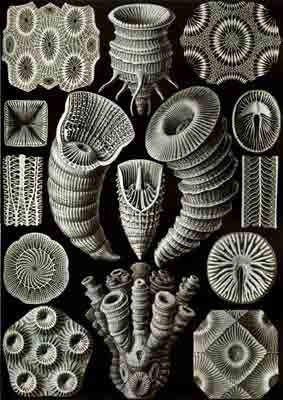Horn Fossil Sea Deep-water Coral mm 27 x 10 x 8 gr 2 Triplophyllites (Homalophyllites) circularis Benthic Invertebrata Sessile Coelenterata Cnidaria Anthozoa Rugose Tetracorals Prehistoric Extinct Paleozoic Carboniferous Collecting Paleontology Museum.
Pleasant fossil find of Tetracorallia Rugosa Favositida Cleistoporidae from the Middle Mississipian of North America, representative collectible specimen of excellent quality and very well preserved, with clear details of the horn-shaped Coralite reticulate structure of the calcite Skeleton.
Only a piece, as in photos.
This horn-shaped Coral (horn coral) belongs to the genus Trilophyllites that lived in the mid-Mississippian period, or about 340 million years ago. It is a few centimeters long with the classic cone shape.
The corals-horn belong to the extinct order
Rugosa, which intuitively means wrinkled, referring to its external appearance. The horn-shaped fossil is the
skeleton of this animal, or octopus. The animal lived in the upper part of the cone. They had many
tentacles protruding to collect food. The tentacles gave the coral a
flower-like appearance. This specimen comes from Hardin County,
Kentucky (USA).
Rugosa (Milne Edwards & Haime, 1850), also called
Tetracorallia, are an extinct order of solitary and colonial corals that were abundant in Middle Ordovician to Late Permian seas. Solitary rugosans (e.g., Caninia, Lophophyllidium, Neozaphrentis,

Streptelasma) are often referred to as
horn corals because of a unique horn-shaped chamber with a
wrinkled, or rugose, wall. Some
solitary rugosans reached nearly a meter in length. However, some species of rugose corals could form large
colonies (e.g., Lithostrotion). When
radiating septa were present, they were usually in multiples of four, hence
Tetracorallia in contrast to
modern Hexacorallia, colonial polyps generally with
sixfold symmetry.
Rugose corals have a skeleton made of
calcite that is often fossilized. Like modern corals (Scleractinia), rugose corals were invariably
benthic, living on the sea floor or in a reef-framework. Some symbiotic rugose corals were endobionts of Stromatoporoidea, especially in the Silurian period. Although there is no direct proof, it is inferred that these Palaeozoic corals possessed stinging cells to capture prey. They also had tentacles to help them catch prey. Technically they were carnivores, but prey-size was so small they are often referred to as microcarnivores.



